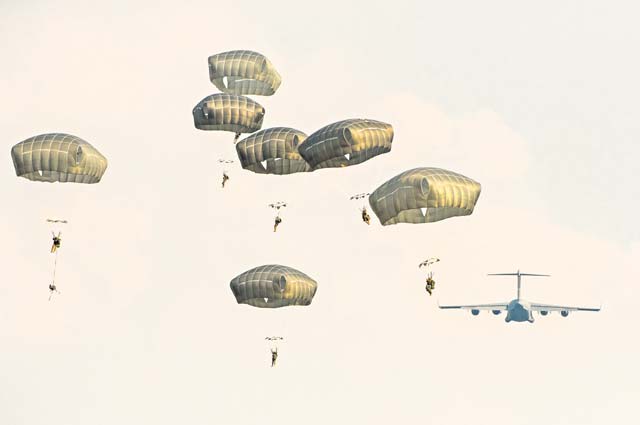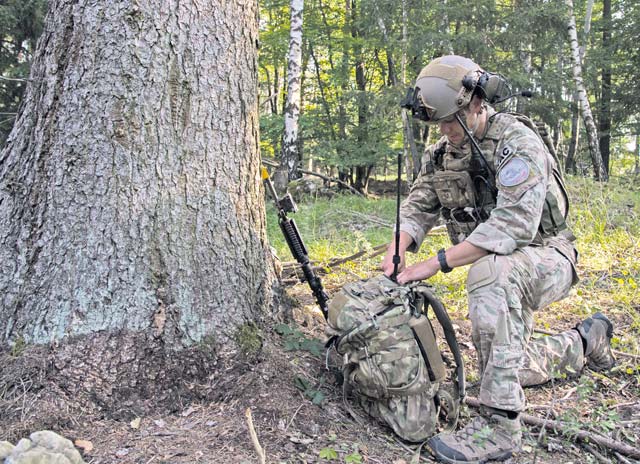
More than 4,500 service members from eight nations arrived at Hohenfels Training Area in Germany Aug. 13 through 24 to participate in Exercise Allied Spirit II.
The exercise’s intent was to strengthen the alliance and enhance interoperability with allied partner nations. Countries involved were the U.S., Canada, the Czech Republic, Georgia, Hungary, Italy, Serbia and the United Kingdom.
“Allied Spirit II … is the largest multinational exercise we’ve had here at the Joint Multinational Readiness Center (JMRC) probably within the last 10 years,” said U.S. Army Maj. Kirk Daniels, JMRC planner.
Among the masses were four U.S. Air Force tactical air control party Airmen. Assigned to the 2nd Air Support Operations Squadron, these Airmen were tasked to integrate with U.S. Army units to ensure air and ground superiority during the exercise.
“While attached with the Army, our job is to provide close air support guidance to the ground commander and control aircraft onto their targets,” said U.S. Air Force Staff Sgt. Seth Hunt, 2nd ASOS TACP.
Along with providing support to their U.S. partners, the TACPs were also able to learn ways to adjust when working with NATO allies.
“It is important working with not only our people, but the foreign nationals as well,” Hunt said. “Everyone does things a little differently, and being able to see how everyone operates helps build the interoperability before we go down range together.”
Another benefit brought by conducting exercises like Allied Spirit II is that unit commanders have the opportunity to see how well their personnel react in a controlled war simulation before they have to deploy.
“When a TACP commander deploys his people, he may never see or hear from them again until the end, so he never truly knows how his personnel are operating,” said Master Sgt. Jason Tonkinson, 4th Air Support Operations Group scheduling and training NCOIC. “However, these exercises provide an honest look into how their troops work, good and bad, through detailed reports, so the commander truly understands where he sits with readiness.”
To ensure players put forth their best effort, the simulated war was created as close to the real thing as possible, including an opposing force, mock towns with civilians and lasers mounted on weapons to indicate damage.
“The biggest reason why it is important for us to conduct these joint exercises is to figure out what we can and can’t do,” Tonkinson said. “It’s all great on paper, but until it is put into practice, we won’t know for sure what works. We push what these people experience to as close to a real war as we can get. Literally the only thing that happens out here that’s not real are live bullets.”
Though the sun was blaring, stomachs grumbling and shoulders drooping with exhaustion, each service member, no matter what country they call home, continued on toward a common goal: to become better.
“We are sculpting how NATO is going to operate in the future, not only with the alliance itself, but also with all the partner nations,” Tonkinson said. “Anybody and everybody who is a troop contributing nation are coming through here to exercise how we are going to fight for tomorrow’s war.”
The exercise concluded Aug. 24, but the training didn’t stop there. The allies look to the future for ways to not only improve their partnership, but also to improve NATO’s capabilities.



